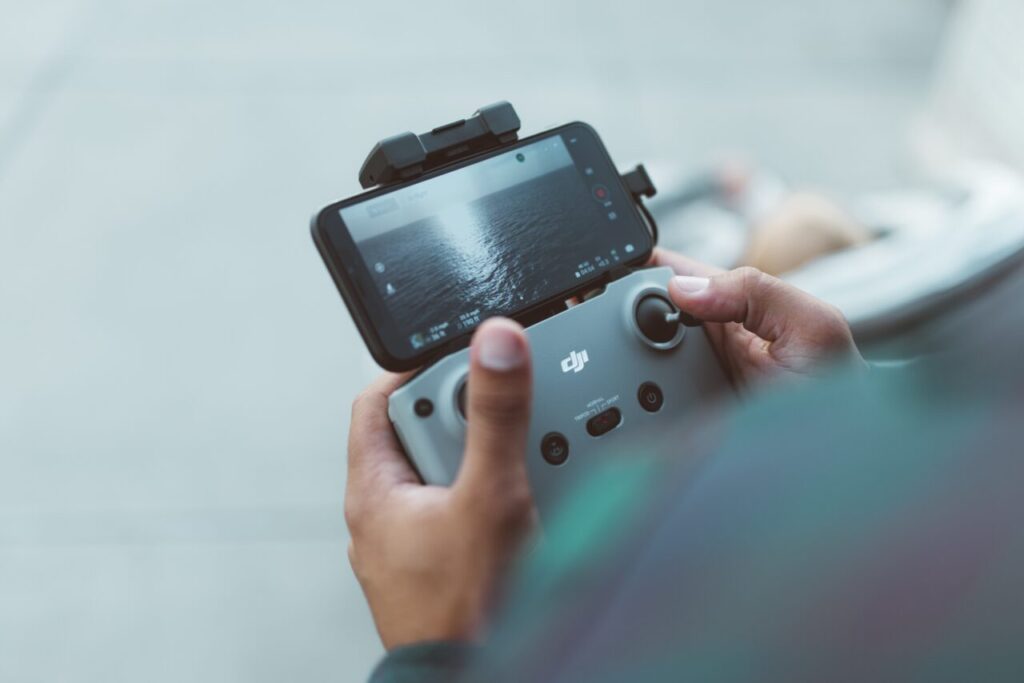Introduction
In the modern era of technology, drones have become ubiquitous, capturing our imaginations with their ability to soar through the skies, capturing breathtaking aerial views and aiding in various applications, from photography to agriculture and search and rescue missions. However, have you ever wondered, “How do drones work?” In this article, we will unravel the mystery behind these flying machines, exploring the principles of flight, the essential components of a drone, how they maintain stability, and the critical role of propellers and motors.
How Do Drones Work: Principles of Flight
At the heart of understanding how drones work lies the fundamental principles of flight. Drones, like aircraft, rely on the same principles of aerodynamics to achieve and maintain flight. Here are the key principles:

Lift
Lift is the force that allows a drone to ascend into the air. Drones generate lift through their wings or rotor blades, creating an upward force that counteracts gravity. The design and shape of the drone’s wings or rotor blades are crucial for achieving the necessary lift.
Thrust
Thrust is the forward force that propels the drone through the air. In most drones, this is achieved by the rotation of propellers or rotors. By varying the speed and direction of these propellers, drones can move forward, backward, or hover in place.
Weight
The force responsible for lifting the drone upward is known as “lift,” and it results from pressure variations along the vertical axis of the drone. Consequently, the lift force is determined by the speed, size, and configuration of the propeller blades. Lift is indispensable for counteracting gravity and raising the drone, requiring all four propellers to operate at high speeds to generate this force.
Drag
Drag, which opposes the drone’s motion by acting in the opposite direction, is the result of variations in air pressure and the air’s viscosity. The choice of an aerodynamic drone shape is aimed at minimizing this resistance force to enhance efficiency.
Control
Control is essential for maneuvering a drone. Drones have control surfaces or movable rotor blades that allow them to change direction and orientation. By adjusting the control surfaces, the drone can roll, pitch, and yaw, enabling it to perform various flight maneuvers.
Components of a Drone
Now that we’ve covered the basic principles of flight, let’s dive into the essential components that make up a typical drone:
Frame
The frame is the structure that holds all the components together. It provides the drone with its shape and stability. Drone frames come in various designs, such as quadcopters (four rotors), hexacopters (six rotors), or octocopters (eight rotors).
Propellers and Motors
Propellers and motors play a crucial role in generating thrust. Electric motors power the propellers, causing them to spin at high speeds. By adjusting the speed of individual motors, the drone can change its direction and altitude.
Quadcopters are most drones with four propellers. This did not happen by chance or to give the drones a unique appearance. There’s a reason for this. To further understand, imagine a drone with only one propeller.
Such a drone would generate enough lift to push it into the air, but it would be extremely difficult to control because it has neither forward or reverse movement. Furthermore, the drone will constantly rotate in the opposite way. This is due to Newton’s 3rd Law of Motion, which states that when two objects interact and are in motion, they affect each other in opposite directions.
A drone with two propellers is another possibility. In reality, it would aid in battery power conservation. Furthermore, by having the propellers rotate in opposite directions, you counteract the torque produced by the single-rotor drone. However, because such a drone is unstable, it is difficult to manage.
A 3-propeller drone, unlike the 2-propeller drone, is not an option because it undoes everything that the 2-propeller drone solves.
Flight Controller

The flight controller is a combination of hardware and firmware that includes algorithms that allow it to understand all of the data it gets from sensors and controls.
The flight controller takes all data and uses it to make real-time decisions via a technique known as sensor fusion. The Kalman Filter is a wonderful example of an algorithm since it allows the controller to make accurate judgements by combining past and present data.
Battery
Drones are powered by rechargeable batteries, typically lithium-polymer (LiPo) or lithium-ion (Li-ion) batteries. The battery provides the necessary energy to operate the motors, electronics, and other components.
How Drones Maintain Stability
One of the remarkable features of drones is their ability to maintain stability in flight. This is achieved through a combination of sensors and algorithms that work together to make real-time adjustments. Some of the key stability mechanisms include:
- Gyroscopes: These sensors detect changes in orientation and help keep the drone level.
- Accelerometers: They measure changes in velocity, allowing the drone to adjust its speed and direction.
- Barometers: Barometric pressure sensors help drones maintain consistent altitude.
- GPS: Global Positioning System receivers provide accurate location data, enabling autonomous flight and precise navigation.
Conclusion
In this exploration of the inner workings of drones, we’ve unveiled the principles of flight, delved into the essential components that make up a drone, and learned how drones maintain stability in the air. Propellers and motors, powered by batteries and guided by sophisticated flight controllers, are the driving forces behind these remarkable machines.
So, the next time you see a drone soaring gracefully through the sky, you’ll have a deeper understanding of how it achieves this remarkable feat. Whether you’re a drone enthusiast, a potential pilot, or simply curious about technology, knowing how drones work is a fascinating journey into the world of aerial innovation.




